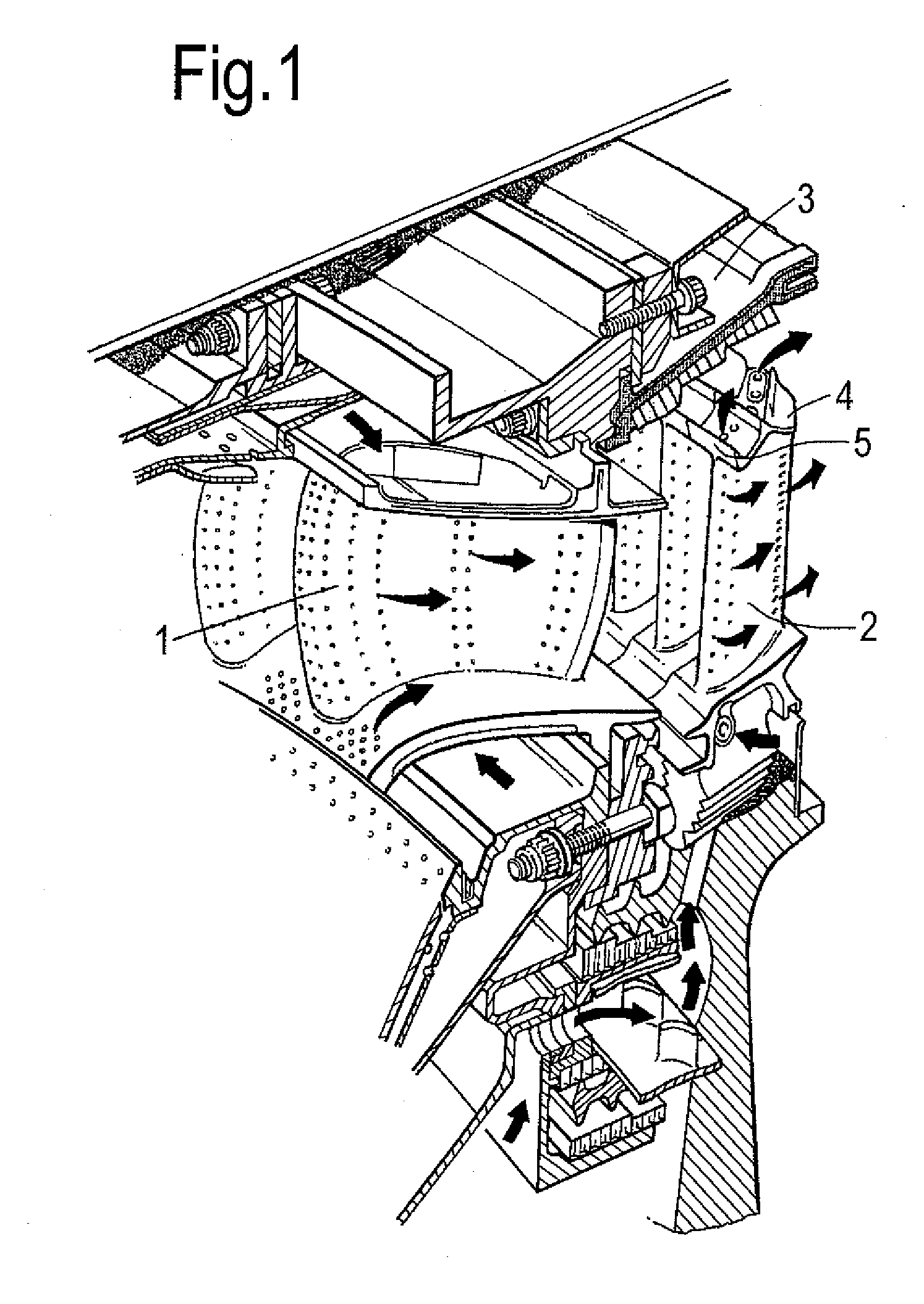Rotor blade
a technology of rotating blades and blades, which is applied in the field of rotating blades, can solve the problems of under-cooling extremities, less effective or efficient cooling of shrouds, and difficult cooling of shrouds, and achieve the effects of improving heat transfer coefficients, increasing the number or size of such passages, and facilitating inspection of passages
- Summary
- Abstract
- Description
- Claims
- Application Information
AI Technical Summary
Benefits of technology
Problems solved by technology
Method used
Image
Examples
Embodiment Construction
[0046]FIG. 2 shows schematically a cross-section parallel to the engine axis through the radially outer part of a rotor blade according to the present invention. The blade has an airfoil portion 10, a shroud 11 and a fillet portion 12 (whose radially inner and outer boundaries are denoted with dashed lines) which eases the transition from the outer surface of the airfoil portion to the outer surface of the shroud.
[0047]The airfoil portion contains a plurality of internal conduits which carry cooling air through the airfoil portion. The internal conduits are formed during the casting of the blade by respective ceramic cores positioned within the mould for the blade. When the cores are removed by chemical leaching after casting, the voids which they leave behind define the conduits. The airfoil portion 10, shroud 11 and fillet portion 12 can be formed as one-piece casting.
[0048]FIG. 3 shows schematically the radially outer parts of cores for the rotor blade of FIG. 2. The arrows overl...
PUM
| Property | Measurement | Unit |
|---|---|---|
| temperatures | aaaaa | aaaaa |
| temperatures | aaaaa | aaaaa |
| temperatures | aaaaa | aaaaa |
Abstract
Description
Claims
Application Information
 Login to View More
Login to View More - R&D
- Intellectual Property
- Life Sciences
- Materials
- Tech Scout
- Unparalleled Data Quality
- Higher Quality Content
- 60% Fewer Hallucinations
Browse by: Latest US Patents, China's latest patents, Technical Efficacy Thesaurus, Application Domain, Technology Topic, Popular Technical Reports.
© 2025 PatSnap. All rights reserved.Legal|Privacy policy|Modern Slavery Act Transparency Statement|Sitemap|About US| Contact US: help@patsnap.com



